Describe, Lighten
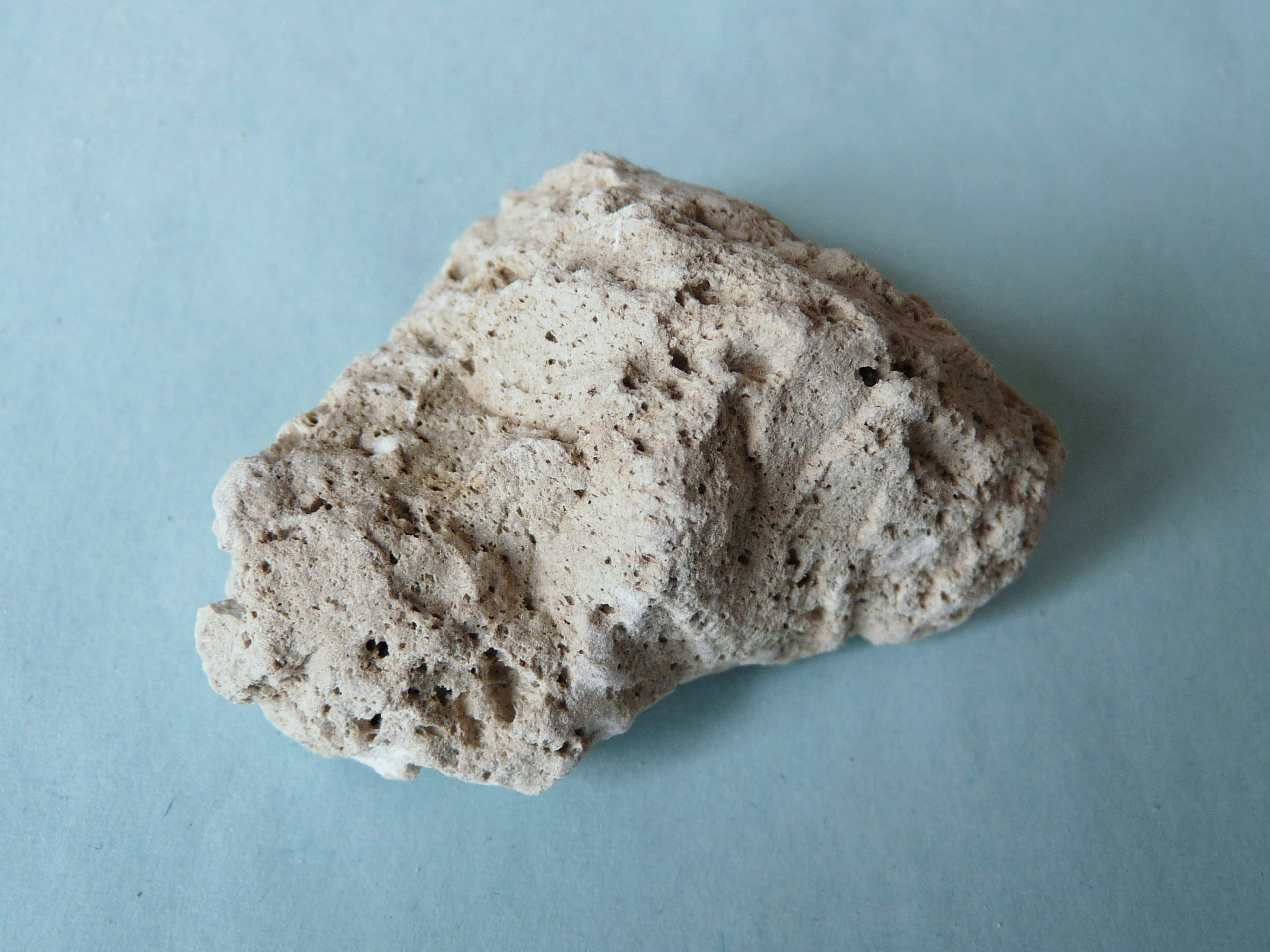
Whilst close to the violence of the world, describing it sometimes has a surprisingly soothing effect. Quick allegory: imagine the Description climbing the slope of a volcano, enjoying collecting pumice stones, pieces of hardened lava filled with air bubbles from the eruption that projected them. Imagine then its physical happiness at the moment of experiencing the lightness of this original stone. It becomes light, calm, close to the imminent or already past destruction. The drama has lost its gravity in every sense of the word. Then the Description surprises itself by juggling stones and throwing them into the water to see them float.
Some readers, past or present, have become specialists: to describe violence with a surprising lightness, affirming that what they collect and accompany in their reading is not so serious. Strange inconsistency?
These descriptors no longer really work in its liberal definition in use since the 18th century. The first relief is that there is nothing left to weigh in the scale of narcissistic reparations and other tax exemptions. What they describe sounds more like a game without consequences, bar talk or childish speak. Besides, they speak as if on a playground: “It sounds like the insurrection of molecules, the inside of a stone a thousandth of a second before it disintegrates…” Here is the kind of lightening (“one would say…”) whose childish lightness favours digressions: “…That’s what literature is all about.”
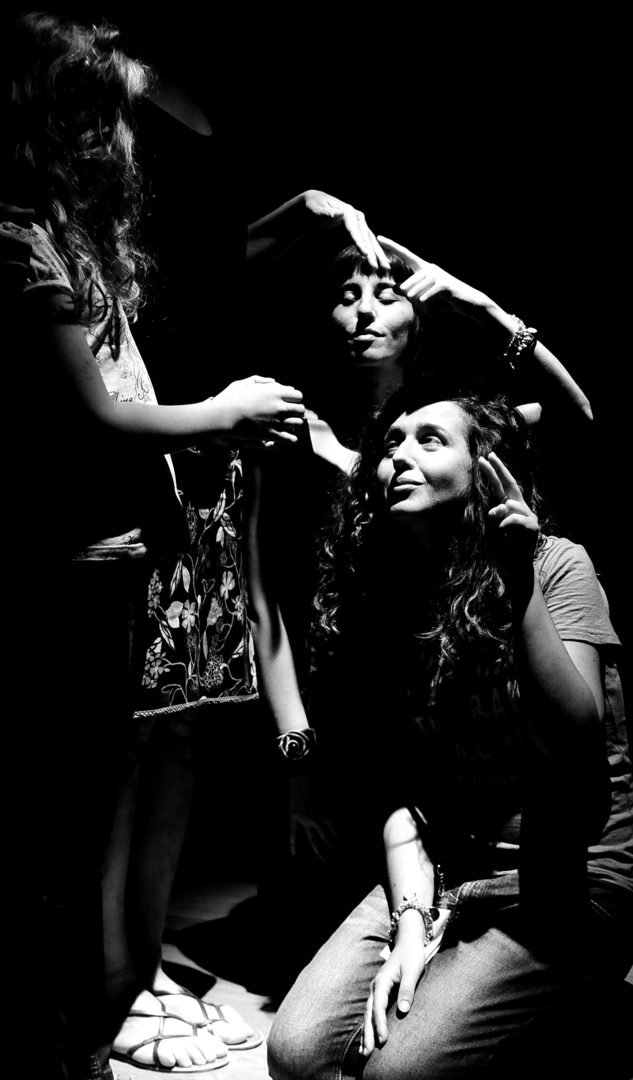
Take Effect: Exit
This ambiguous game flavoured with violent words (insurrection) is good. Here, description accompanies what is just the beginning on the canvas: a brutal vibration around a Nothing that slips away but continues to make what it used as contours vibrate. Certain artworks have shown the way, and there is a whole modernity to “the edge of the explosion” described by Beckett before Bram van Velde in 1945, Claudel before Rembrandt, Artaud before van Gogh, and Deleuze before Turner as, respectively, an “arrangement in the process of disintegrating” in Ronde de nuit to the “compressed vertigo” of a provincial landscape that “smells like a baked bomb,” to the “power of an explosive, without contours that makes painting itself an unparalleled catastrophe.”
All of this does not necessarily correspond to what we see, and for good reason. To exit (the outline of the figures, the framework of the commodified art object, even the body itself that traps them) was the leitmotiv of these twentieth century readers. To betray the steadiness of their object in order to see in it the instant of a process, and the imminence of an eruption, was a question of life or death: it was necessary to transmute the catastrophe suffered into a desire for metamorphosis and escape. Description thus mimicked the secret gesture of the artwork to accompany it elsewhere, towards the exit, by thwarting the ideal adequacy of the words addressed to that which is framed, even if it meant finding it by surprise. Between the work and its description, an interval is thus revealed. In this gap, some find the terrible separation between the thing and the word which symbolises it from afar; between the master and the pupil who imitates him; between the parent (the work) and the child (its description) who prolongs it. Others will rather seize the occasion to amuse themselves with what will always leave us incredulous: truth as adequacy, resemblance as identity, generation as forecast of the begotten.
These readers thus de-dramatized with a vengeance. They were amused by the discontinuities, the disjunctions, the unforeseen, by all the gaps between what they said and saw, between what took shape and what escaped recognition. This gap gave birth to the hypothesis of tact, a discreet and attentive complicity to what comes from the other, companion of escape at a distance. This quasi-indifference in the sense of the work (apart from that of the eruption or the escape, which is the only one that counts) surprises more than ever. Irritates, even. God knows that it is enough to lend an ear to the grumbling that rises, the one that waits precisely for an explanation, with its adequate causes, its analogies without remainder, its brutally simplified genealogies. Our descriptors confirm a double acknowledgement specific to the explosive modernity of the artworks they describe, marked by a loss of a clear organising principle that the ghost of which many seek out today in horoscopes and theories clouded with mystery. Far from any concealment of secret content to be explained in detail, calmly describing symbols of ambivalent violence that creates as much as it destroys would almost become an issue of society.
Yet, this total, meticulous explanation– between manic suspicion and proliferating passion for detail– has long had another name for other purposes: the rhetorical practice of ekphrasis, from the Greek ekphrasis, to point (phrasis) out (ek), or explain, a real or imaginary work, as seen with the shield of Achilles in The Iliad. The description of every detail was to make it exist before the eyes of the listener, to give it life, and thus to respect its scholastic or parliamentary function: to please, to move and to instruct. In the meantime, a “small yellow patch of wall” (Proust before Veermer) was enough to disturb the pride of such a rhetorical enterprise a small detail long preventing the unified seizure of the great Whole of the work through the enigma of its appearance. In our contemporary performances, what remains of the performative character of ancient ekphrasis is a slight call to accompany the effects of words and gestures. Exit, surprise yourselves, and awaken your attention simultaneously to the outside and inside.
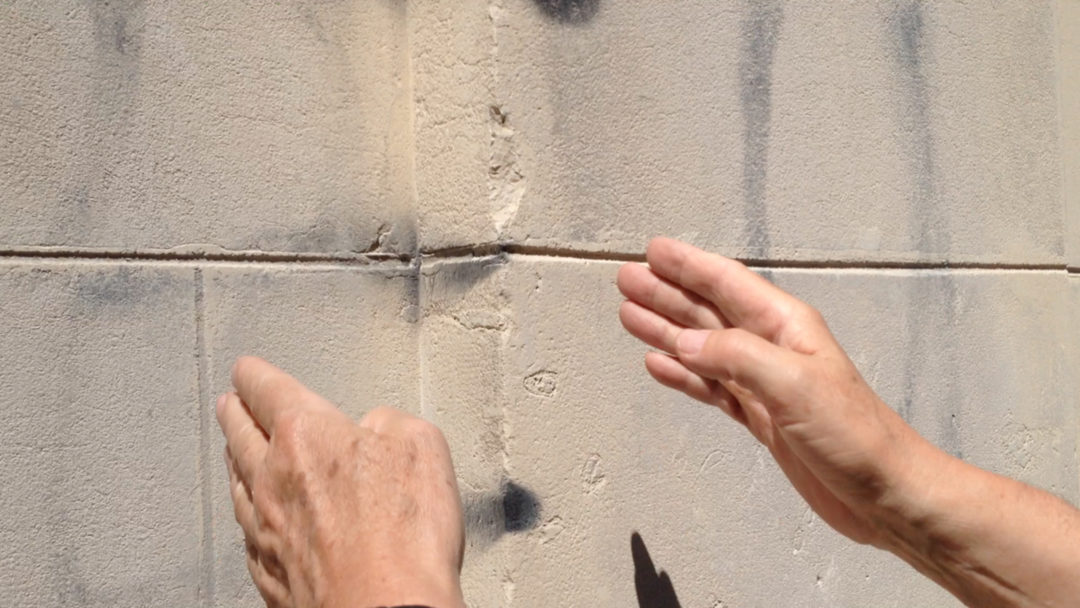
Take Effect: Animate
If it is a question of animating the work with words, we must believe in the fiction of a fantastic power of language that would magically invent this “latent heat” of the work, this revolutionary energy which, according to Victor Hugo, unceasingly threatened to appear in France since 1789. How can this power be animated in an inanimate object? It all begins with a digression, never on the target, but rather next to the work which becomes in turn an ambivalent target: ignored, evaluated, provoked, anticipated in its effects, or even transformed by the one who describes it. Far from its scholastic virtues, writers have tried to animate the body of the work by this fantastic, even erotic, power of description to create an impetus, to trigger a thrill, to make lips quiver. All contours start to vibrate, and one no longer knows if it vibrates in the work or because of its description.
Where are such effects found today? For lack of animating works, certain performed conferences subtly parody the discourse on art, by giving life to absent works or a value to forgotten objects. The challenge is to revive our attention as close to a certain contemporary violence as possible which would rather have a tendency to annihilate it.
Parodic Pedagogy
A few years ago, Alex Ceccheti invited the spectators of his conferences to mimic artworks in the Louvre by striking the poses of represented characters. These encounters took place far from the Louvre, at the Centre Pompidou, for example (Le Louvre sans le Louvre, “the Louvre without the Louvre”, 2014). Through words, the artist presented the absent examples of ancient statuary or classic painting like a memory of a Pompeiian catastrophe. Spelling out or making the absent gesture spell became a way to read it. To take back a gesture meant less to resemble it than to draw from it a refreshing expressiveness in the margins of the cold explanation. Far from the ideal fixity of the idealised body, shivering slightly for the occasion in this aftershock (in the seismic sense) caused by the living description, this one takes the relay of the art. What does one do then? Play the other with the other, then find this gesture elsewhere and differently– on the bus for example, or with an elbow on a bar– when the encounter with the other produces the troubled event of an uncertain recognition. Then point out to the anonymous person that their profile represented a Mesopotamian bas-relief found under the burning sand of the desert. And see what comes out of it, experimentally, far from the empty shells that no longer know what they imitate by means of imitating.
“Do it with me, not like me,” said the lifeguard to their apprentice. In this example from Différence et répétition, Gilles Deleuze becomes a pedagogue and a thinker of pedagogy– a relatively ignored part of his work, so frightening is the relationship to the other and to the interventions of the other. In spite of the boredom of scholarly repetition, this description of the gestures of the other has its moments of adequacy but to something else other than what the swimming instructor shows, without which the swimming as singular reinvention of a gesture in the destruction of the waves would remain impossible. In the same way, the reader sometimes faces the space that serves them as a model to describe when they reinvent it in its description.
In their urban conferences, Dector & Dupuy reveal visual elements in the streets, things that are poor in dignity yet rich of a paradoxical artistic memory which seems to haunt these rejects of the attention.1 A constellation of chewing gum appears as a drip painting on the sidewalk. Blue straps preserve the memory of the parcel they surrounded, then, once crushed by cars, become a moving frame in our hands that slightly “prefers” to capture this part of the landscape, without excluding what is out of sight. The covering (or repainting) of still legible graffiti under the layer of paint calls for a scholarly analysis: one of the two lecturer-performers questions the visual choice of the municipal employee who “packed” each letter as closely as possible, not quite preventing its reading: “Fascists out of our lives” (2013). The penal value of the covering becomes a visual and ironic value: calling the gaze rather than rendering it indifferent, it gains a mystery worthy of Christo’s wrappings. In this case, a pack of letters ready to explode (express) again. “That’s what literature is all about…”
It is no longer question of paying the hero or the demiurge. Discretion, modesty… a gently moralist dimension appears with freshness in these micro-gestures of capture, this pedagogy of the minute, without instructions or final examination, far from the vanity of the work which it seems to convene to better dissociate itself from it. Their exhibition, “Beaucoup de peu,” (A Lot of Little) will undoubtedly confirm this.2
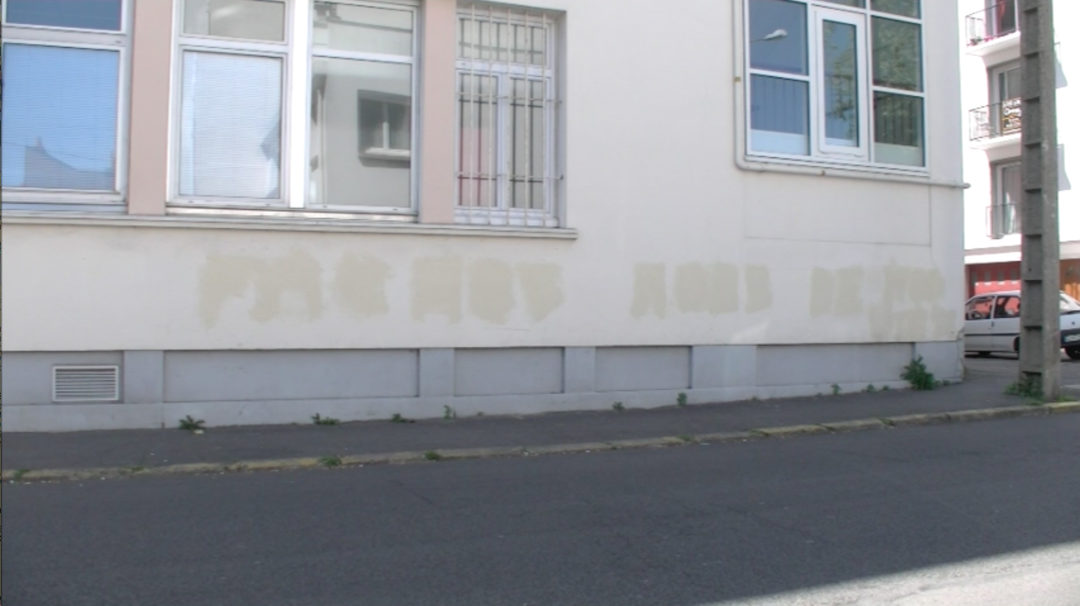
Light Legacies (Villon)
In these times of dissipated attentions, under blue masks and on top of private foundations (if the second floors are reserved for clothes), the question ‘what to describe?’ often gives way to ‘describe for whom?’. This kind of artistic description recalls the parodic legacies of François Villon, the Lacanian in situation, who multiplied the cases in which “loving is giving what one does not have to someone who does not want it.” In his poetic will (Le Lais François Villon, 1457), Villon described the “beautiful and useful” mirror that he bequeathed to prisoners and the stolen sign of a tavern that he bequeathed to the chief of the Parisian police when he did not even leave enough for three orphans to live or “at least get through this winter.” From subversive acidity to the raw awareness of unhappiness, this testament for nothing lists objects that no one can assimilate. For nothing, but not for just anyone, like our descriptions which appropriate the works which do not belong to them to call the relay of other readers ask of nothing.
What remains is the address: the address to the heir who will know nothing about it, like a prayer (to the artist? to the municipal employee who repaints graffiti? to the work itself, finally recognised?). The address is a link to the implicit reader capable of being moved by it, of rekindling, in their own way, the desire to describe, to play with the signs and symbols. Where does one find the erotic and fantastic effect of language in extremis? It is not the work that the words undo by parodying it (it will always be fine) but the ideal address that it supposed. This is what is at stake in these performances, which can be found elsewhere, in the classroom or in the street: when describing means inventing an address, and calling on the other to tactfully destroy a framework in order to invent another one that is lighter and more sharable.
“Giving what we don’t have,” is not so bad in this case since it is a question of passing on an inappropriate energy that always calls for digressing and sabotaging the given from within. This energy, we don’t have it, it has us, and animates us, and it is the energy that we will transmit without having had the time to appropriate it, work of art or not: with an association of ideas, an imbalance in a sentence or a gesture (that of the person passing on the relay), a contrapposto in the form of bizarre claudication or interior division, like Bruce Nauman counterfeiting his famous videos fifty years later.3 It is our turn to describe him, Nauman seems to suggest with his swaying.
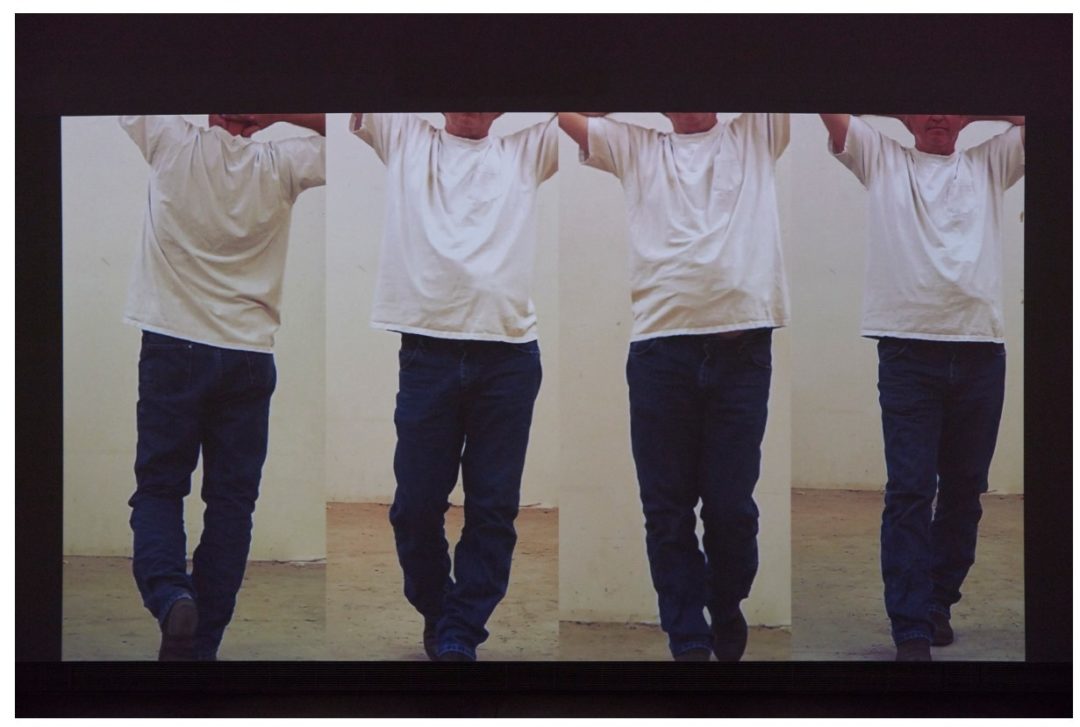
Sade: a Precursor?
I’ve digressed. What kind of reading performance for the future? One in which describing would mean simultaneously destroying, reinventing, relaying? It is not a question of “counterfeiting the terrible irruptions” of a volcano, like the chemist character in Sade who wanted to enjoy destruction on a larger scale by triggering “the effervescence [of a] fake volcano.” One could, more calmly (from the Greek kaieiv: to burn, to set fire to) find other “performances” where destruction is already an invention, and even a revolution in potential.
Sade’s only reading performance took place on July 4 or 5, 1789 (perhaps the first of the modern age) when, from the window of his cell, he summoned the population of the Faubourg Saint-Antoine to rise up against the governor of the Bastille. How would one describe the Bastille (its exits? its security loopholes? the vulnerability of its contours?) and pass it on to otherwise calm and lightened readers? As others described the Vendôme column and its fall (Courbet).
Any reading should have the effect of a successful sabotage.
- https://dector-dupuy.com/tagged/video
- From 11 September to 20 November 2021 at Galerrrie du Grrranit SN in Belfort https://www.grrranit.eu/evenement/dector-et-dupuy/.
- “Bruce Nauman : Contrapposto Studies,” 2021, Punta della Dogana – Collection Pinault, https://www.palazzograssi.it/fr/expositions/en-cours/bruce-nauman-contrapposto-studies/.
Image on top : Pumice stone. DR
- From the issue: 98
- Share: ,
- By the same author: Some white on the map, Matter in Suspense, New Enumerations, Interlacing and Sabotage,
Related articles
Performa Biennial, NYC
by Caroline Ferreira
Camille Llobet
by Guillaume Lasserre
Thomias Radin
by Caroline Ferreira